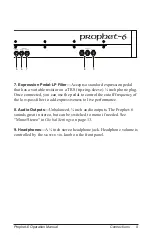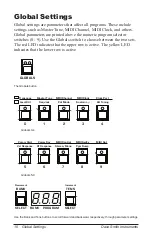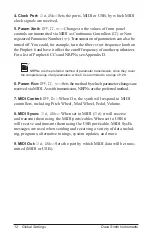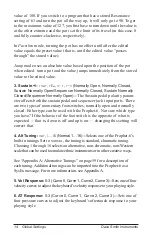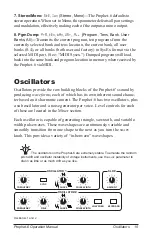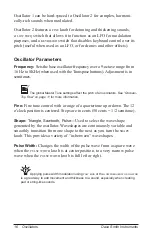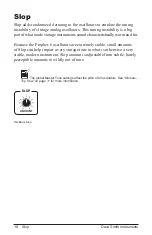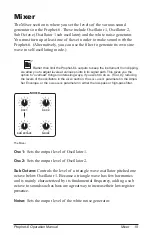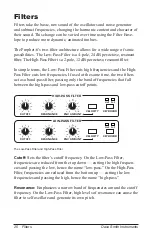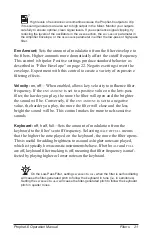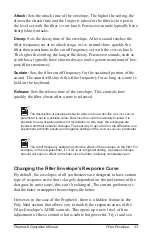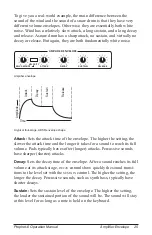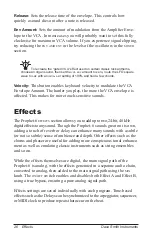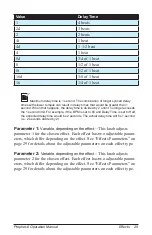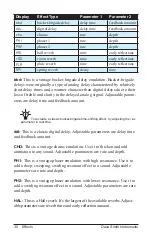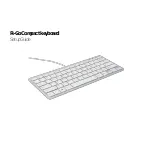
16 Oscillators
Dave Smith Instruments
Oscillator 1 can be hard-synced to Oscillator 2 for complex, harmoni-
cally-rich sounds when modulated.
Oscillator 2 features a
fine
knob for detuning and thickening sounds,
a
low
freq
switch that allows it to function as an LFO for modulation
purposes, and a
keyboard
switch that disables keyboard control over its
pitch (useful when used as an LFO, or for drones and other effects).
Oscillator Parameters
Frequency:
Sets the base oscillator frequency over a 9-octave range from
16 Hz to 8KHz (when used with the Transpose buttons). Adjustment is in
semitones.
The global Master Tune settings affect the pitch of all oscillators. See
“Globals -
Top Row” on page 11
for more information.
Fine:
Fine tune control with a range of a quartertone up or down. The 12
o’clock position is centered. Steps are in cents (50 cents = 1/2 semitone).
Shape:
Triangle, Sawtooth, Pulse—
Used to select the waveshape
generated by the oscillator. Waveshapes are continuously variable and
smoothly transition from one shape to the next as you turn the
shape
knob. This provides a variety of “in-between” waveshapes.
Pulse Width:
Changes the width of the pulse wave from a square wave
when the
pulse
width
knob is at center position, to a very narrow pulse
wave when the
pulse
width
knob is full left or right.
Applying pulse width modulation using
poly
mod
or the
low
frequency
oscillator
is a great way to add movement and thickness to a sound, especially when creating
pad or string-like sounds.








